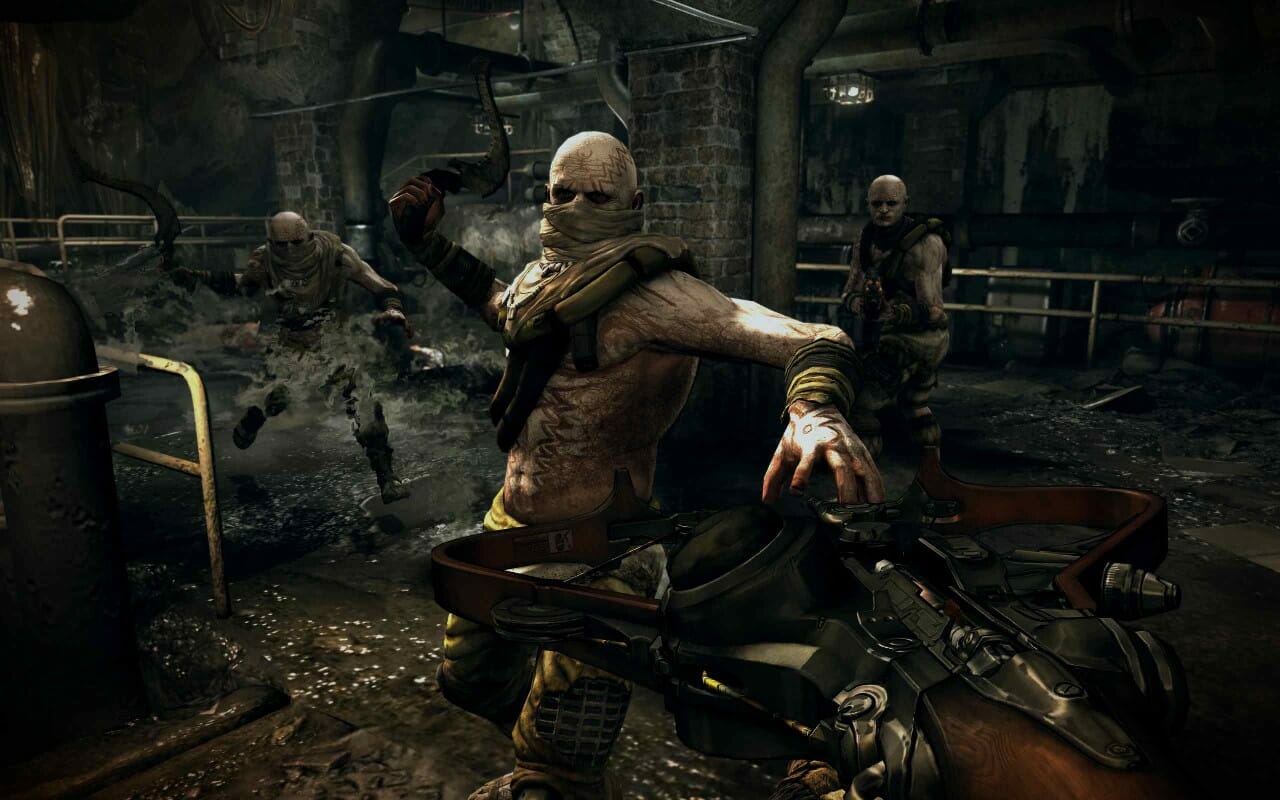Rage (Multi-platform)

Caveat emptor: if you’re going to plunk down $60 for Rage, you may want to prepare yourself for the five stages of grief.
I was stuck between denial and bargaining after playing the first hour of the game at this year’s Penny Arcade Expo—thundering through the first handful of missions killing mutant freaks and driving around the wasteland, my only real discovery when my hour was up was that I was still at a loss as to how the seemingly disparate open-world and vehicular elements fit into the overall flow of gameplay. I left Bethesda’s booth feeling conflicted. While Rage’s combat mechanics felt solid enough, I still half-heartedly wished I had been playing Skyrim instead.
I’m just going to say it: Rage is a tremendous letdown. And that’s not just because it’s id’s first major original release since Quake. (Y’know, the Carmack-branded white whale fans have been waiting for since Doom 3 hit in 2004.) Right off the bat, the game does itself no favors with its slow start; after being rescued from your escape pod (a little over a hundred years after a calamitous asteroid hits earth, not that it’s particularly important) you’re immediately tasked with wiping out some mutants that have been attacking the settlement where you’ve been taken. You gain some new armor, a shotgun, and the ability to use wingsticks, the game’s tri-bladed, boomerang like weapons that’ll take a low-level foe’s head off in one pass.

Still, even as you gain access to new weapons and equipment in successive missions, the nagging feeling of familiarity grows. The core design in play is no different from Fallout or Borderlands—talk to someone in a hub, agree to help them out by taking care of errand x or attacking enemy encampment y, return to said settlement for reward. The comparison between aesthetic and themes between these games is painfully obvious, and perhaps it would be still admissible if Rage had some semblance of cohesion, or didn’t otherwise feel so bizarrely inconclusive.
There are some things in Rage that had potential. As you might expect, the mechanics of wielding and shooting ordnance are for the most part well done, with wingsticks being a personal favorite; there are faint glimmers of artistic interest in the strange Wild West-meets-steampunk-meets-Mad Max sci-fi art direction; the way some enemies scramble around like hard-to-hit beasts as they rush you is a neat thought. Even the somewhat tacked-on racing is tuned to the point where driving should be fun.
Wasted potential seems to be Rage’s worst enemy, however. Early on in the game, you visit the television studio of the possibly mad and very thick-chinned producer of Mutant Bash TV, a live televised Most Dangerous Game, essentially, that pits you and your weaponry against a bunch of, you guessed it, mutants. The sadistic kill-or-be-killed game show seems like trademark id territory, but once you get in you realize it’s little more than a shooting gallery (no surprise given the iOS title’s gameplay) lifting the exact same combat with a couple of performance scores and placing it in a creepy circus-esque context. It’s bad enough that this would-be mini-game fails at delivering anything you haven’t already seen before, and its presence barely registers as a blip on Rage’s narrative radar, either. After you get what you need from its bloated, clownlike proprietor—a character whose underlying psychotic bloodlust has more potential personality than the rest of the game’s cast put together—you’ll likely never see him again.

-

-

-

-

-

-

-

-

-

-

-

-

-

-

-

-

-

-

-

-

-

-

-

-

-

-

-

-

-

-

-

-

-

-

-

-

-

-

-

-








































